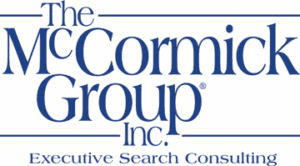Perhaps no industry is as misunderstood as executive search. For many senior executives, their understanding of the industry is based on only one or two experiences, often with large, brand-name firms. But the world of executive search is much more extensive and diverse. Among the misconceptions we often hear from potential clients are:
1. Search Firms Are Uniformly Classified as Retained or Contingent
It is true that some firms strictly work on a retained basis, while others most often work on a contingency basis. In fact, there are many search firms, often called “hybrids” that charge only a partial retainer or will work with no retainer up front in certain situations, such as for regular clients or on searches in which an eventual hire is largely assured. The most important factor in evaluating a firm is the commitment of the firm, not how its services are priced.
2. Search Fees Are Uniformly Expensive
Some firms, while charging fees amounting to as much as one-third of the first-year projected compensation, also add charges for administrative overhead, which can amount to thousands of dollars per month. Other firms offer more flexibility, based on a variety of factors including the complexity of the search, the financial status of the employer, and the extent of the client relationship. Few of those firms charge for expenses apart from reimbursement of those such as travel for candidates or search consultants. Additionally, many firms will consider flat fees based on the amount of work as opposed to the compensation of the position to allow clients to better budget the cost of a search.
3. Searches for Senior Management and Executive Positions Require Six Months or More to Complete
Many firms feel the need to justify the fee by selling a process, often including an over-emphasis on research and the creation of an extensive pre-search report, before engaging with the market. Yet the key to success are search professionals who understand how to engage leaders in the specific field and can comprehensively canvas the market to develop high-quality candidate pools. This can be done in substantially less time, even for the most important or sensitive positions. Given the hyper-competitive market for talent today, clients can’t afford an unnecessarily extended process that may cost them the most attractive candidates.
4. Larger Firms Are Better Equipped to Handle C-Level Searches
Clients often think that firms touting a large network of candidates and an extensive database are best equipped to handle high-level searches. While a network may be an initial advantage, too often firms limit their outreach to their network believing it will produce a sufficient pool of candidates. Moreover, the more established a firm is in a particular market segment, the more likely they will have hands-off policies that prevent them from accessing leading potential candidates for a particular assignment.
The importance of propriety databases is largely overrated today. Publicly available databases, such as LinkedIn and Leadership Connect, have largely obviated proprietary databases, which quickly become outdated in any case. Compounding the problem is that many larger firms use junior recruiters to make the initial contacts based on the database research. Those junior recruiters, having limited contact with the client, are less knowledgeable about the opportunity and, consequently, less effective in presenting it. Recruiting firms where more senior professionals handle even the initial contact can be more effective in engaging both sources and potential candidates in more productive conversations.
5. Executive Search Firms Only Work on C-Level Positions
This is based on the premise that only C-level positions are critical for companies, reinforced by the practice of some firms to set a mandatory minimum fee for the search. Middle managers and executives are the strategic hires that enable a company to realize its objectives. Smaller and boutique search firms more willing to commit senior recruiters are often better-able to handle such searches.
6. Using Multiple Firms Assures Better Market Coverage
Engaging several placement agencies working on a contingency basis may be a practical and effective solution when the need is for multiple hires or adequate is enough and there is a larger pool of potentially qualified candidates. Agencies continually mine and build databases of active candidates, so they may quickly be able to produce candidates that fit a set of requirements. The downside is that, realizing they’re in competition, they don’t push beyond their database and initial outreach to approach passive candidates who aren’t in a database and aren’t scanning job boards. In other words, no one agency feels the responsibility for filling the position.
When a company’s success depends on having the best possible person in a critical role, the imperative is for a firm that has the commitment and methodology to surface the top candidates in the market rather than simply those who “are on the market.”


